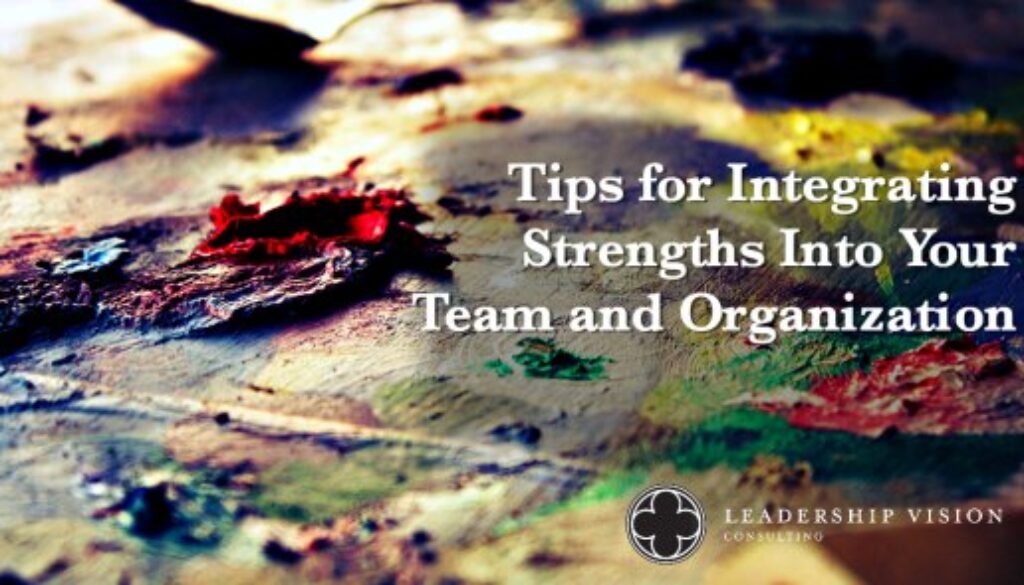Tips for Integrating Strengths Into Your Team and Organization
With over 11 million people having taken StrengthsFinder, there is is no doubt that a global conversation has been started about what is right with people. In my professional circles, it is difficult to go anywhere now without meeting someone who has taken StrengthFinder or been introduced to it in their organization.
Exciting stuff, right? Well yes……and no.
While the personal stories of its impact are rich and varied, most tell me the strengths movement hasn’t gained much traction in their workplace. Often the usage of Strengths remains at a very introductory level. The sentiments are surprisingly similar, no matter the industry.
It felt like it was just another bandwagon initiative. Everybody took their strengths and then we didn’t do anything with them. I can’t even tell you what mine are anymore…
A Strengths Consultant came in to work with us and the buzz was in the air for a while, but then that was it. We never took it past our Top 5.
We all took our strengths, but our managers never even asked us about them. I really think we missed an opportunity.
Using Strengths Takes Time
This is where I get frustrated because Strengths is SO much more than simply knowing your Top 5. Most professionals spend the majority of their waking hours at work. Why wouldn’t organizations want to be filled with people who are more self-aware, engaged and empowered to leverage their best selves every day? Why wouldn’t organizations invest in their employees so that they are positioned optimally for peak individual and team performance?
The answer to these complex questions is surprisingly simple. It’s not that they don’t want these things. Of course they do. But more often than not, they grossly underestimate the commitment it takes to build a healthy, sustainable culture of strength. They sacrifice depth for breadth.
At LVC, we know that there is no specific formula for making Strengths ‘stick’ in a workplace. Recognizing that no two organizational cultures are the same, our goal is to go far beyond a simple Strengths event. By all accounts, sustainability is the ultimate measure for this investment of time and resources.
To do this, our consultants are continually creating multiple entry points that deliver our proven Strengths Model of Learning, Leveraging and Leading. Our expertise in architecting a Strengths infrastructure can provide any organization with the foundation it needs to continue to grow, despite employee turnover, changes in leadership and the consultants leaving!
Whether you are simply looking to begin this work, revive the Strengths on your team or help it gain momentum in your organization, here are some helpful tips to get you started:
Take it On Yourself!
Often, I meet people who are interested in the Strengths work but are waiting for some kind of directive from management to incorporate it. They’re preoccupied with the right way to do it. Don’t wait!
Strengths is at its best when it is authentically generated at the grass roots level. So just commit. Start small. Maybe set aside 3-5 minutes at the start of every meeting to have the team or pairs of colleagues discuss a Strengths question. Create these to fit the context of your team.
Here are a few ideas:
- Give an example of how you have used a strength at work or at home in the last week?
- What is the earliest memory you have for one of your themes of strength?
- Talk about something you did this week at work that gave you energy. How do you think your strengths played a role in this?
- When do you feel most valued on this team?
Stay Curious
Every new decision, task, challenge, or struggle is an opportunity to learn more about your colleagues and understand why they do what they do. Understanding individual perspectives will help to re-frame opinions and relational patterns that may be detrimental. This is imperative to healthy team functioning.
Pose reflective questions like these:
- Discuss one of your strengths that is deeply valued in your culture or upbringing.
- How do you use your strengths to make a difficult decision?
- What strength do you rely upon in conflict situations?
- Do you have a strength that gets in your way sometimes?
Deal with Conflict
All teams will inevitably encounter conflict. Some more often than others. I read somewhere that a complaint is just a really bad way of making a request. So why don’t we just make a request? This could help to diffuse tension by removing personal judgment and destructive language.
Try these questions and prompts the next time there is an issue on your team:
- What strengths of ours could be causing this friction?
- What strength do you need more or less of from me right now?
- When you do this with your strength of [ insert Strength here ] it makes me think/feel that [ …]. Could you please do [ this… ] instead.
- What I’m trying to do right now with my strength of [ insert Strength here ] is [ this… ] But what I’m hearing you say, is that you’d rather that I [ do this… ] because [ reason ].
Make it Go Viral
Learning a new language means that you have to use it. So find people inside or outside of your organization that are keen to speak it with you. Seek opportunities to discuss with key leaders and influencers how to best integrate this work in your context. Strengths can have a place at the table in almost every situation. From employee performance reviews, to team health checks to onboarding new hires……the opportunities are limitless.
I’d love to hear some of your own ideas for integrating Strengths into your team and organizational culture. Leave it in the comments below or email us.
For more information about how we do this please feel free to contact us.




